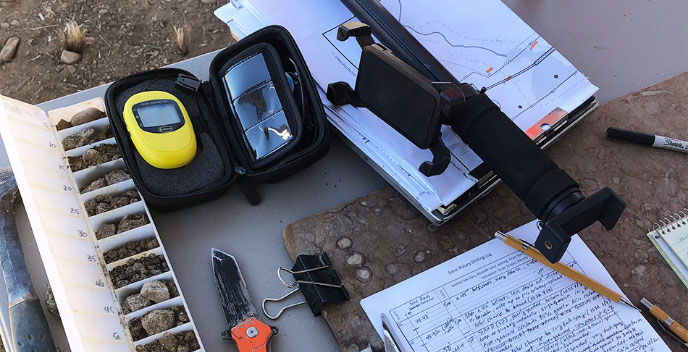Initial site investigations for this former southern California manufacturing site found soil and groundwater had been impacted by Volatile Organic Compounds (VOCs). The former facility was used for the development, manufacture, and assembly of electronic components, with historical releases of chlorinated solvents that impacted localized areas of soil and groundwater. Clean-up of this 14-acre site is overseen by the Regional Water Quality Control Board (RWQCB).
Hargis + Associates, Inc. (Hargis) was retained to evaluate existing site assessment data; conduct additional soil and groundwater assessment; prepare a remedial action plan; design and implement soil and groundwater remediation; and assist with ongoing RWQCB negotiations. Site assessment activities have included the installation of over 90 groundwater monitor wells in the vicinity of the site.
Hargis designed and conducted groundwater remediation at the site, including bench and pilot testing
of enhanced in-situ bioremediation (EISB). The EISB involves injection of a mixture of a dilute food-grade vegetable oil and lactate into groundwater that serves as a nutrient source for a naturally occurring bacteria that breaks down chlorinated VOCs through a process called anaerobic reductive dechlorination. To further enhance the break down process of chlorinated VOCs, the nonpathogenic, naturally-occurring bacteria, dehalococcoides, are injected with the emulsified oil. Potable water at the site used during the injections is pre-conditioned to reductive conditions favorable for reductive dechlorination using zero-valent iron, which removes oxygen form the potable source water. The initial full-scale EISB groundwater remediation focused on on-site source areas, a transect along the hydraulically downgradient site boundary and an off-site transect downgradient from the site. Additional supplemental EISB injection events have focused on maintaining an EISB bio-barrier along the downgradient site boundary. EISB of groundwater has been successful in reducing concentrations of chlorinated VOCs at the site. Groundwater monitoring and evaluation of remedy effectiveness are ongoing.
H+A also supported design, construction, and operation of a soil vapor extraction (SVE) system. The SVE system has been successful in reducing soil vapor VOC concentrations to below site-specific risk-based levels. Operation of the SVE system is ongoing to contain residual VOCs in soil vapor resulting from continued offgassing of VOCs from groundwater.

KEY ACCOMPLISHMENTS
• Conducted soil and groundwater investigations.
• Prepared a Remedial Action Plan (RAP) and RAP addendums.
• Designed, installed, and implemented a full-scale SVE system.
• Reduced concentrations of VOCs in soil vapor to below risk-based levels.
• Conducted EISB pilot testing.
• Implemented full-scale EISB groundwater injections.
• Implemented supplemental EISB bio-barrier injections along the site boundary.
• Conducted remedy reviews to optimize and assess the effectiveness of remediation.

